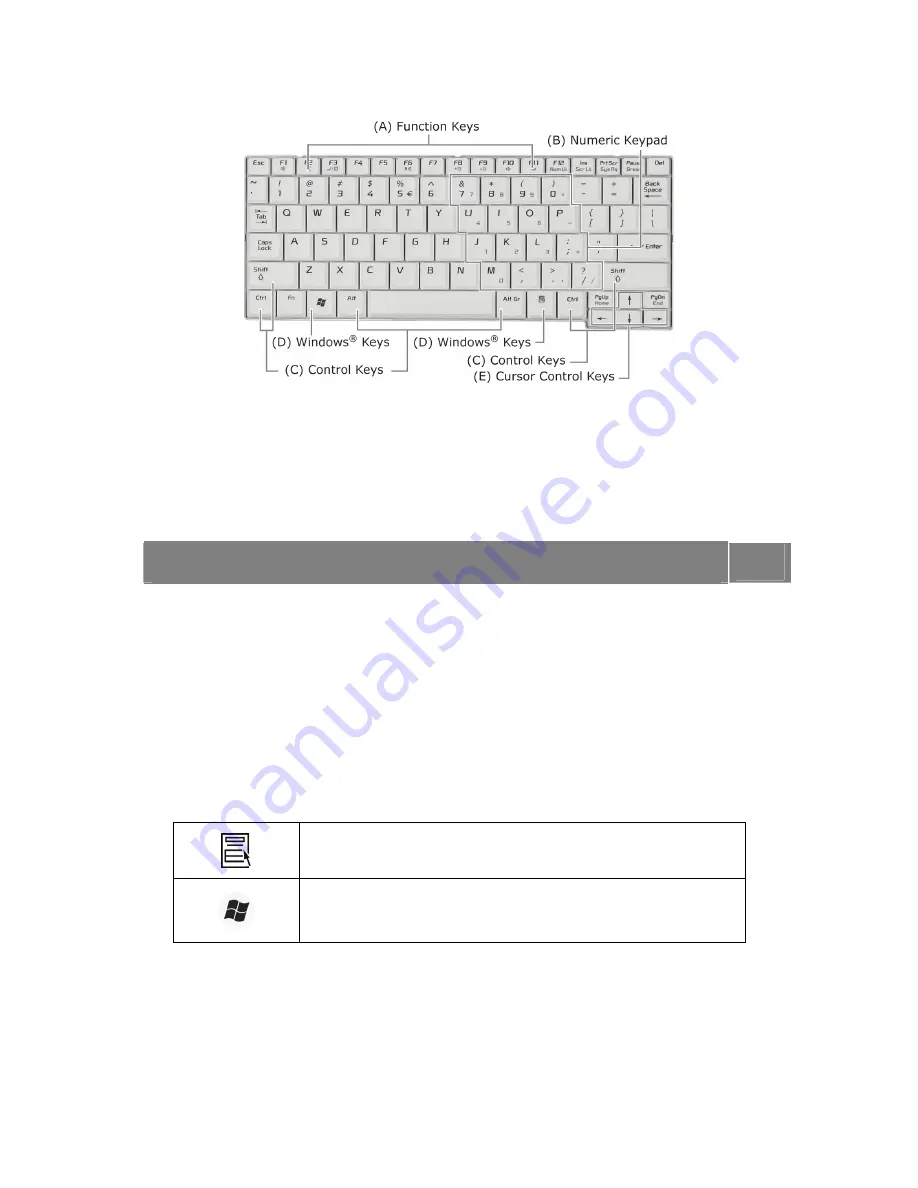
12
Keyboard
The keyboard is equipped with many features. However the outlook of the keyboard may be
slightly different from your actual unit. These include:
•
Function Keys (A)
- function keys are available on the notebook keyboard. These keys
work together with the
Fn
key to activate special functions. Function keys are application-
driven.
For more information, please refer to:
Introducing Your NEC VERSA
→
Function Keys
in this Electronic User’s Guide.
Page
14
•
Numeric Keypad (B)
- pressing
Fn+Num Lock
on the keyboard activates the numeric
keypad numbers and functions printed in blue at the bottom right corner of the keys. The
keypad lets you type numbers and mathematical operators (+, -) as you would on a
calculator. The keypad is ideal for entering long lists of numbers. When you press
Fn+Num Lock
again, the keys revert to their normal functions as typewriter keys.
•
Control Keys (C)
-
Ctrl
,
Alt
,
Fn
and
Shift
are controls used in conjunction with other
keys to change their functions. To use control keys, press and hold down the control key
while pressing another key. For example, "Press
Ctrl+c
" means to hold down the
Ctrl
key
and press the
c
key. Key combinations are specific to the application you are running.
•
Windows
®
Keys (D)
- use the following two keys to facilitate your work.
Shortcut/Application key - provides quick access to shortcut
menus. (This key acts like a mouse’s right-click button.)
Floating Windows
®
key - displays the
Start
menu. (The
outlook of the Floating Windows
®
key depends on the
notebook you purchase.)
•
Cursor Control Keys (E)
- cursor control keys let you position the cursor on the screen.
On the screen, the cursor is a blinking underline, block, or vertical bar depending on the
application. The cursor indicates where the next typed character/text will be inserted.













































